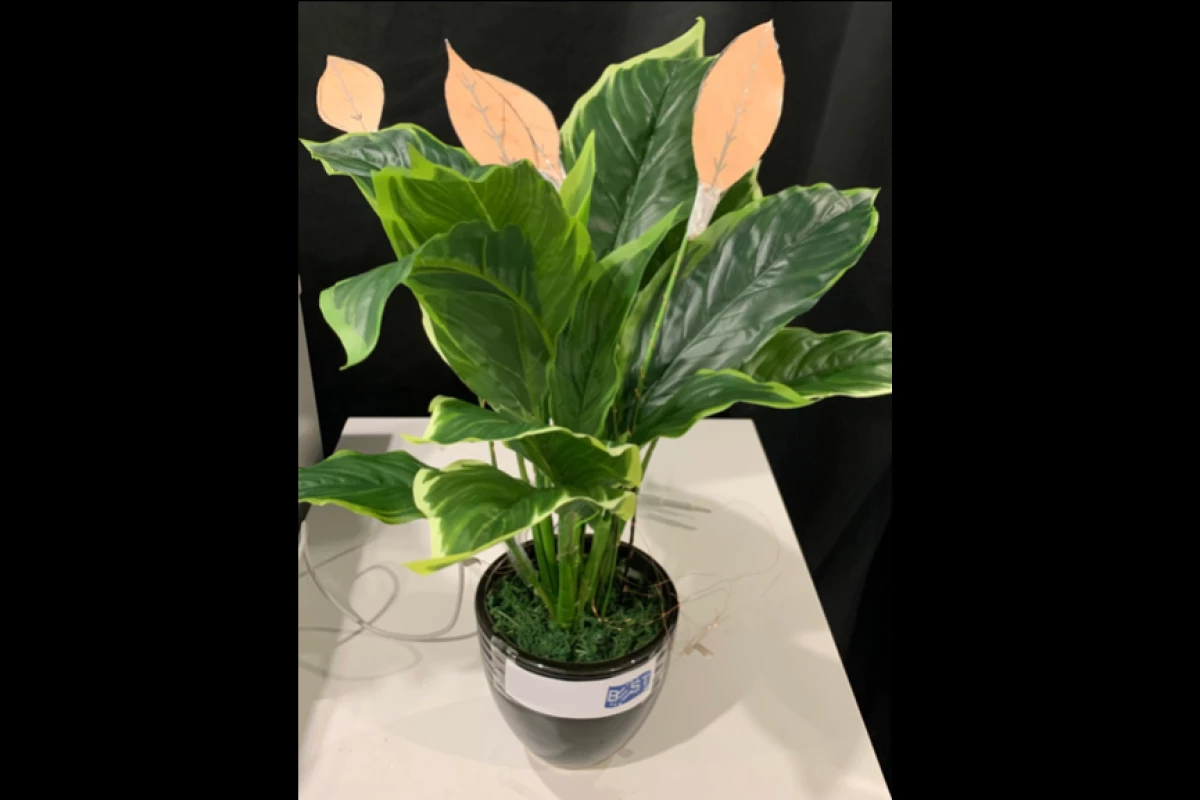While renewable energy sources certainly are more eco-friendly than fossil fuels, most of them only produce electricity in one way, such as using sunlight … which isn't always available. A new system, that has been built into an artificial plant, uses both wind and rain.
The experimental "power plant" was developed by an international team of scientists led by Prof. Ravinder Dahiya from Boston's Northeastern University. It incorporates energy collectors of two types, both of which were created in a visually appealing leaf shape for this particular application.
The first type is what's known as a triboelectric nanogenerator (TENG). These devices take advantage of the triboelectric effect, a phenomenon in which an electrical charge accumulates in one material after it's separated from another material with which it was in contact. It's what's responsible for the static charge that occurs when you're combing your hair.
In the case of the power plant, the TENGs consist of a layer of nylon nanofibers sandwiched between layers of polytetrafluoroethylene, more commonly known as Teflon. When the wind (even light breezes) causes the leaves to rustle, the Teflon and nylon layers are pressed in and out of contact with one another, producing a static charge that's converted into electricity by integrated copper electrodes.
The other type of of energy collector is called a droplet-based energy generator (DEG). In a nutshell, it generates electricity via the force exerted by raindrops as they fall upon it.
In tests conducted so far, when an artificial plant incorporating collectors of both types was exposed to conditions simulating natural wind and rain, it generated enough electricity to power 10 LED lights in short flickers.
That said, the scientists state that the technology could be scaled up to a larger form for higher output, or multiple smaller power plants could be linked together to form networks.
The research is described in a paper that was recently published in the journal ACS Sustainable Chemistry & Engineering.
Source: American Chemical Society




